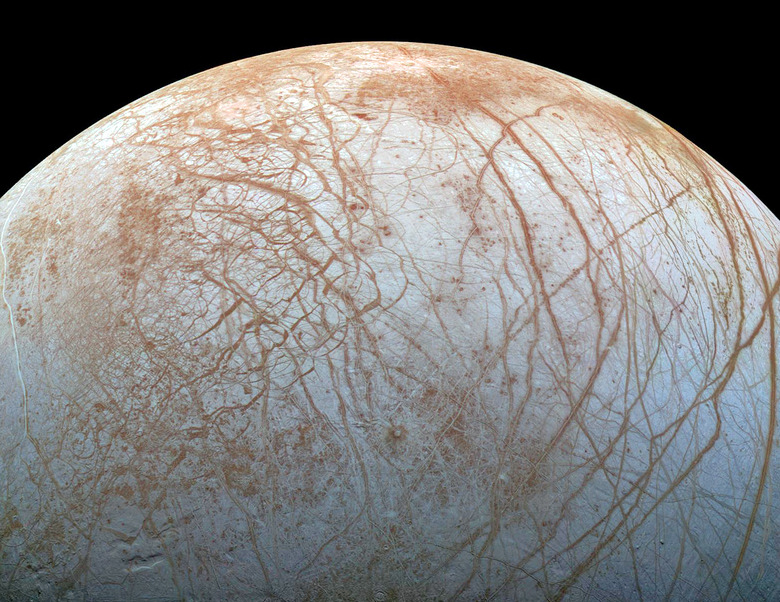NASA Releases First Juno Image From Europa Flyby
NASA has revealed the first Juno image of Europa taken in a recent flyby. The flyby took place on September 29, and NASA received the first image hours after it was taken. The image was captured as Juno passed by the moon on its closest approach of around 219 miles. Juno is expected to return more images in the coming days, too, as NASA processes all of the data the probe captured.
This flyby is important primarily because it's only the third time that we've made such a close approach to the moon. Additionally, it's the closest that a spacecraft has passed by Europa since 2000 when NASA's Galileo came within 218 miles of the moon's surface. Coming so close to the surface of the moon is what allowed Juno to capture such breathtaking images of Europa, too.
As the sixth-largest moon in the solar system, Europa is only slightly smaller than our own lunar satellite. Some scientists believe the thick ice shell that makes up the moon's surface hides a salty ocean beneath it. This belief has often sparked debates that Europa, like Ganymede, could support life beneath its icy surface. Unfortunately, this first Juno image of Europa doesn't give any insight into that.

But, these Juno images of Europa do show off the Annwn Regio, a region near Europa's equator, in beautiful detail. If you're interested in learning more about where exactly Juno is right now following the flyby, you can check out NASA's Eyes on the Solar System app. This app allows you to track various spacecraft, including Voyager 1, which is currently traveling in interstellar space.
These Juno images of Europa will no doubt help fuel the future missions that NASA and other space agencies have planned for the Jovian moon. And with some additional observations, scientists may be able to detect more details about the surface of the moon.
Unfortunately, these Juno images of Europa were captured in a very quick flyby, with the spacecraft racing past the moon at around 14.7 miles per second. As such, it's unlikely we'll see a slew of images from the spacecraft like we have in the past.
More NASA news: The NASA SOFIA telescope just took its final flight
